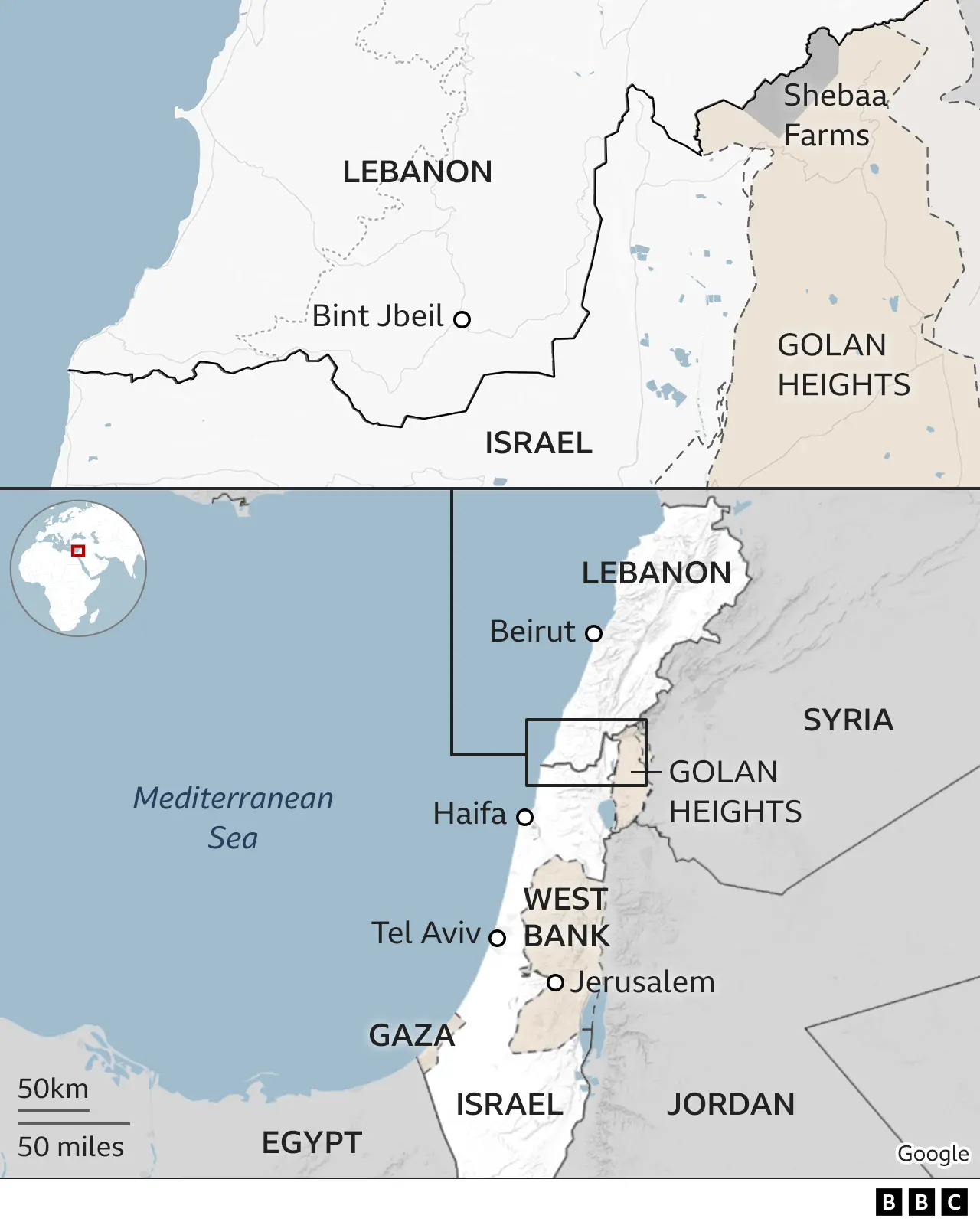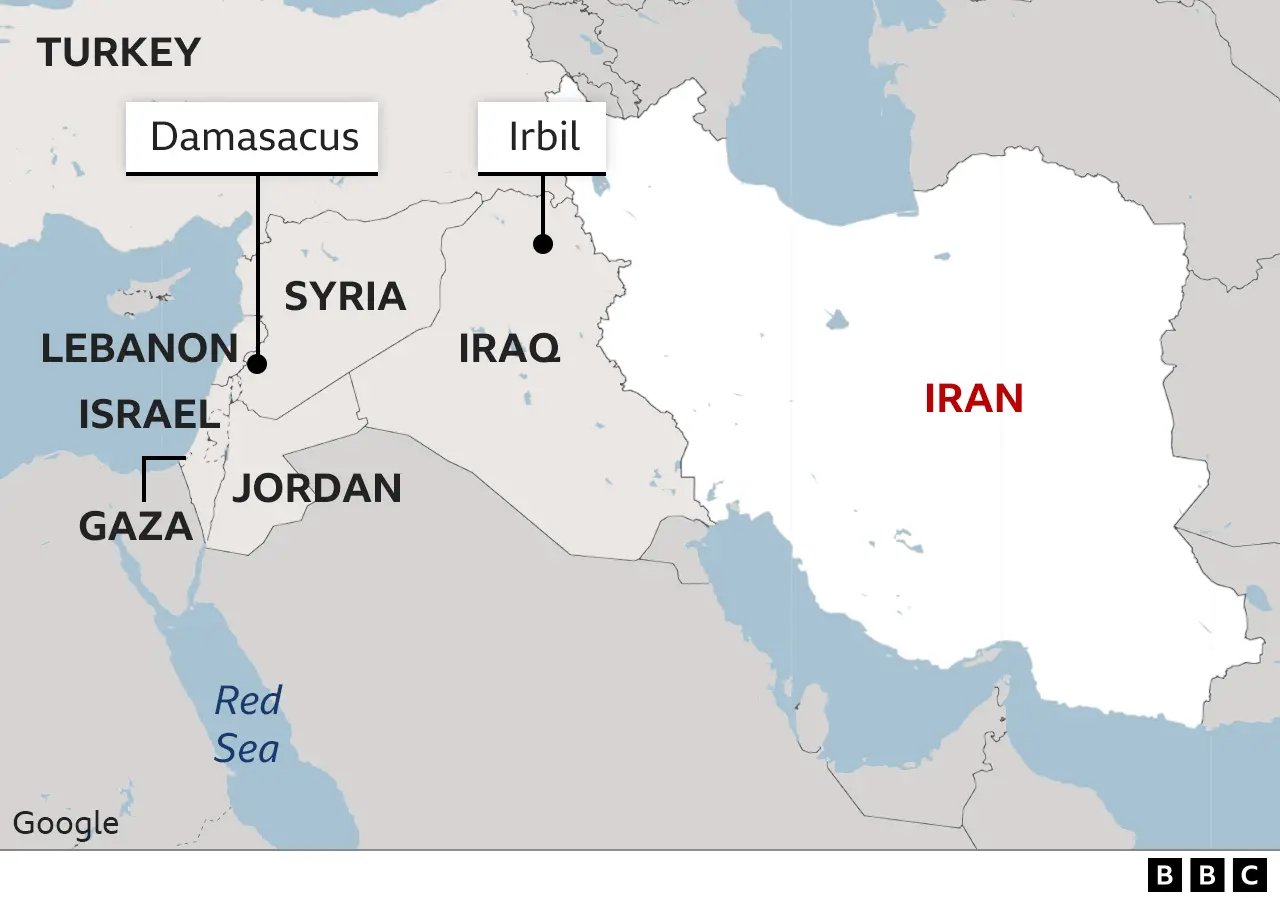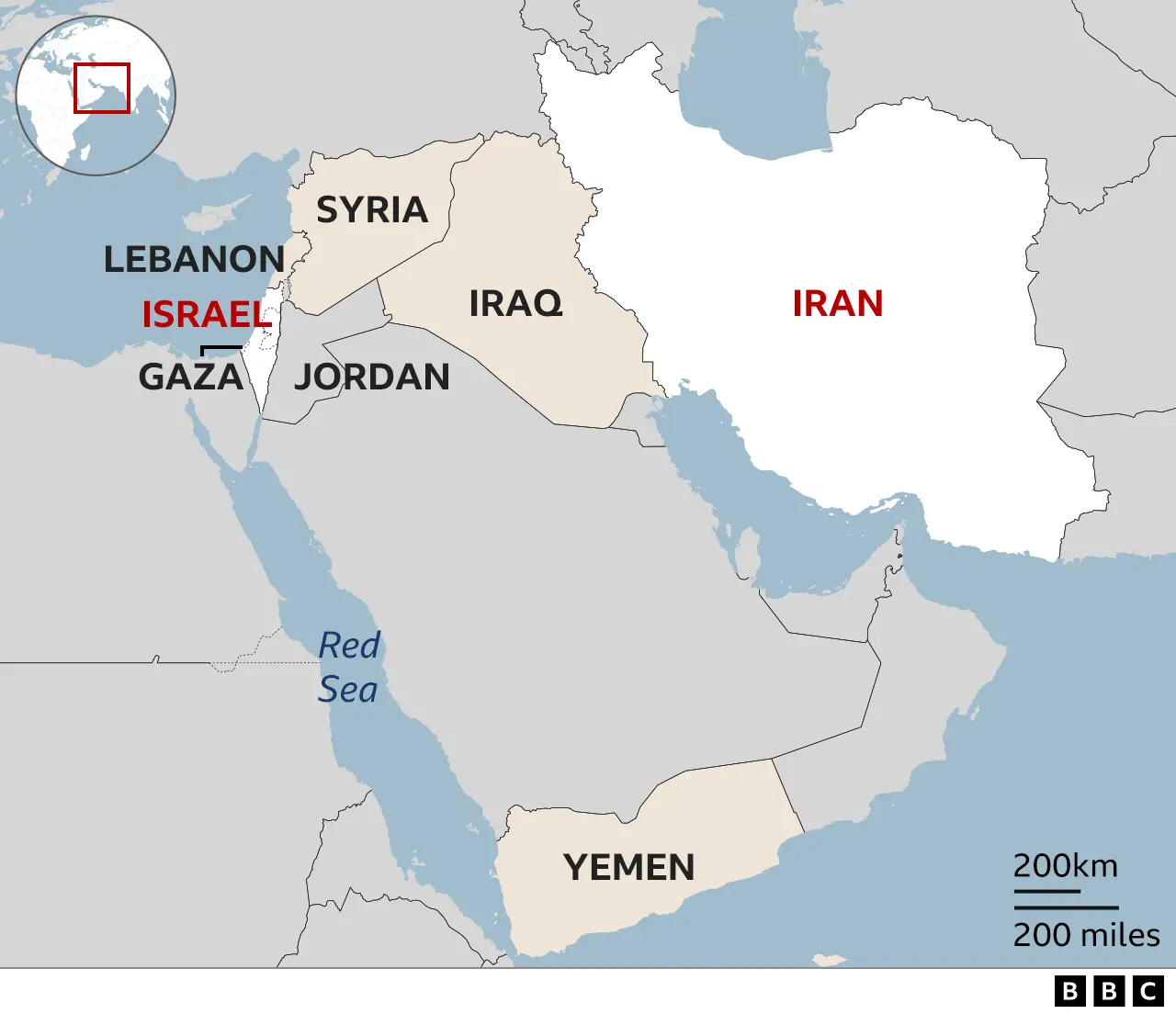Have you ever wondered about the actual reach separating Iran and Israel, two very prominent nations in the Middle East? It is, you know, a topic that often comes up when people talk about what's happening in that part of the world. Getting a good grasp on the physical span between them, and what that span means, helps us get a clearer picture of regional happenings. We are talking about more than just a figure on a map; it involves how geography shapes interactions and, so, how events play out across a vast area.
The actual span between these two places, you see, is something many folks are interested in, not just those who study maps. It is rather a key piece of information for anyone trying to figure out the complex ways things work in the Middle East. While a straight line on a piece of paper might make it seem like a quick trip, the real span from Iran to Israel is much more involved, covering not just miles but also many layers of political give and take. This piece will try to shed some light on the actual physical separation, along with its broader implications, just a little.
This discussion looks at the precise span from Israel to Iran, a really important figure in the political happenings of the Middle East. We will learn about the geographical reach, how long it takes to fly, and the distances between their land borders. All of this is set against the history of the region and, you know, what is going on right now. It is about understanding the simple numbers and the bigger picture they paint, which is that of a complex, interconnected region.
Table of Contents
- How Far is the Air Travel Distance Between Iran and Israel Border?
- What is the Geographic Layout of Iran and Israel in the Middle East?
- Understanding the True Iran to Israel Distance
- When Did Israel Strike Iran Border Areas?
- Did the United States Get Involved in the Middle East Distance?
- What is the Current Status of the Israel-Iran Border Situation?
- Iran's Jewish Community and Cultural Ties Beyond Distance
- What Does a Potential Conflict Look Like Given the Distance Between Iran and Israel?
How Far is the Air Travel Distance Between Iran and Israel Border?
When we talk about the shortest way to travel by air, like a bird flying straight, the separation between Israel and Iran measures about 1,789 kilometers, or just over 1,112 miles. That is a pretty good stretch of ground, you know, if you think about it. If someone were to take an airplane, one that typically moves at a speed of around 560 miles each hour, the trip from Israel to Iran would take something like 1.99 hours to get there. It is a quick hop, in a way, when seen from an airplane's point of view, showing that direct travel can cover vast spaces rather quickly.
This figure, the 1,789 kilometers, represents the most direct path through the air, without any detours. It gives us a basic idea of the sheer span that separates these two nations. So, too, it is almost a straight line on a globe. This measurement is a starting point for thinking about how far apart they truly are, especially when considering air operations. The travel time, just under two hours, makes it clear that while the physical separation is considerable, modern travel methods make it a relatively short passage, in some respects.
What is the Geographic Layout of Iran and Israel in the Middle East?
Iran and Israel are two very important countries in the Middle East, each with a long history and rich traditions. To get a handle on the span between them, we first need to look at where they sit on the map. Iran is situated in the western part of Asia, sharing its borders with countries like Iraq, Turkey, Armenia, and Azerbaijan to its west. Israel, on the other hand, is located right on the eastern edge of the Mediterranean Sea, a very key body of water in that region. These locations, you know, really shape how they interact with their surroundings and each other.
The geographic closeness between Iran and Israel is a subject of really big interest. It is not just for map makers, but for anyone trying to figure out the very involved ways things work in the Middle East. The direct line on a map might suggest a rather quick trip, but the actual Iran to Israel span is far more detailed. It covers not just kilometers and miles, but also many layers of political and strategic considerations. This physical setup means that any direct interaction between them would, more or less, involve other countries in the area, too.
Understanding the True Iran to Israel Distance
While the straight-line air travel measurement gives us one kind of picture, there are other ways to think about the span between Iran and Israel. For instance, the distance calculated between the central points of each country is about 893 kilometers. When we look at the shortest span based on their main borders, including any big islands, it is around 920 kilometers, or even a little more than that. These different numbers, you know, show that "distance" can mean different things depending on how you measure it, and each measurement tells a slightly different story about the physical separation.
The idea of how far apart these two nations are is something that has a lot of meaning. It is not just about the numbers themselves, but about what those numbers mean for the way things happen in the region. The fact that there are different ways to measure this separation, like centroid to centroid or border to border, suggests that the physical span itself is a topic that requires some careful thought. So, too it's almost, these measurements are a starting point for deeper discussions about the region's overall layout and the positions of these two countries within it.
When Did Israel Strike Iran Border Areas?
There have been times when actions were taken across this span. Israel, for example, started strikes aimed at nuclear sites within Iran on June 13th. This event, you know, marked the beginning of a period where both sides exchanged fire. It was a moment that showed the practical implications of the distance between them, as military actions were carried out over that significant physical separation. This incident, just a little, highlights how quickly things can change and how far reach can be overcome by modern capabilities.
Following those initial actions, Iran responded with missile strikes directed at Israel. These retaliatory actions, sadly, resulted in the loss of at least 24 lives. The back-and-forth actions, you see, underscored the tense situation and how events can escalate, even with a considerable physical span between the two nations. It is a stark reminder that geographical separation does not always prevent direct confrontation, and, basically, the effects can be felt across a wide area.
Did the United States Get Involved in the Middle East Distance?
Yes, the United States has played a part in the overall picture. President Joe Biden, for instance, has moved forces around in the Middle East. This action was part of bigger efforts to help keep Israel safe from any potential attack by Iran or groups working with Iran. This involvement shows that the span between Iran and Israel is not just a local matter, but something that draws in bigger players, too. The presence of other nations' forces in the area, you know, adds another layer to the already involved situation, affecting how distances are perceived and acted upon.
The redeployment of forces by the U.S. signals a broader concern about stability in the Middle East, especially as it relates to the relationship between Iran and Israel. It suggests that the physical separation, while significant, does not isolate the situation from outside influences. So, too it's almost, the actions of one country can have ripple effects that reach far beyond its own borders, pulling in allies and other interested parties. This kind of involvement, you know, highlights the interconnected nature of security concerns in that part of the world.
What is the Current Status of the Israel-Iran Border Situation?
For a time, a very delicate agreement to stop fighting was in place between Israel and Iran. This happened one day after the then-U.S. President Donald Trump announced a truce. That agreement brought an end to 12 days of fighting that had broken out after Israeli strikes on Tehran. This period of calm, you know, showed that even after intense exchanges, there can be moments of de-escalation, though such truces can often be quite fragile. It is a situation that typically requires constant attention and, naturally, careful handling from all sides.
The ceasefire, while it lasted, offered a brief pause in the direct exchanges of fire. It points to the fact that despite the physical span and the deep disagreements, there are moments when efforts are made to pull back from direct conflict. However, the description of it as "fragile" tells us that such agreements are not always strong and can be easily broken. This situation, you know, really shows how unpredictable things can be in the region, even when a truce is declared, as a matter of fact.
Iran's Jewish Community and Cultural Ties Beyond Distance
It is worth noting that Iran is home to the largest Jewish community in the Muslim world, and indeed in the Middle East, outside of Israel itself. This is a significant detail, as it shows a human connection that exists beyond the political and geographical separation. There are also a good number of Christians living in Iran, somewhere between 250,000 and 370,000 people, making Christianity the biggest recognized minority religion there. These communities, you know, represent cultural and historical ties that exist quite apart from the political tensions, adding a different kind of layer to the discussion of "distance."
The presence of such communities in Iran highlights a different kind of closeness, one that is not measured in kilometers or miles, but in shared heritage and daily life. It means that while the political relationship between the two nations might be strained, there are people-to-people connections that have existed for a very long time. This aspect, you know, offers a different way to look at the idea of separation and connection in the region, showing that cultural threads can stretch across political divides, basically.
What Does a Potential Conflict Look Like Given the Distance Between Iran and Israel?
A question that sometimes comes up is what a direct conflict between Israel and Iran would even look like, especially considering the physical span. The reality is that neither country can truly reach the other directly without going through, and therefore involving, other nations like Iraq, Jordan, or Syria. This geographical fact means that any large-scale military action would almost certainly draw in neighboring countries, making the situation much more complicated. It is a key point, you know, when considering the actual possibilities of a direct, conventional fight between them.
The need to cross other countries' territories to reach each other creates a sort of buffer zone, in a way. It means that the span is not just an empty space but is filled with other sovereign nations, each with their own interests. This situation makes any direct military confrontation a very difficult proposition, as it would likely lead to a wider regional upset. So, too it's almost, the physical separation, in this sense, acts as a deterrent, making direct engagement far more complex than it might seem on a simple map. It truly shows how interconnected the region is, actually.
This discussion has touched upon the various ways to measure the span between Iran and Israel, from air travel figures to border-based calculations. We have looked at their geographical positions in the Middle East, how past events like strikes have unfolded, and the involvement of other nations like the United States. We also considered the presence of significant communities, like the Jewish community in Iran, which speaks to cultural ties beyond political divides. Finally, we explored what the practical implications of this span mean for any potential direct conflict, showing how other countries would almost certainly be involved.
Related Resources:



Detail Author:
- Name : Sylvia Dooley I
- Username : jodie74
- Email : orussel@gmail.com
- Birthdate : 1992-07-05
- Address : 47844 Rory Fort Suite 581 South Reggie, WV 46122-5436
- Phone : 1-810-846-4194
- Company : Ritchie, Metz and Wehner
- Job : Equal Opportunity Representative
- Bio : Dolorem ipsam praesentium molestias ea impedit. Similique vitae quae iusto nulla quam mollitia ex. Cupiditate praesentium eligendi omnis aperiam est eos.
Socials
instagram:
- url : https://instagram.com/ursula_id
- username : ursula_id
- bio : Ut voluptatem et sunt quia omnis et. Perspiciatis qui non rerum aut eum. Ipsam itaque ea sunt.
- followers : 5249
- following : 1452
facebook:
- url : https://facebook.com/rippinu
- username : rippinu
- bio : Quia cupiditate et ipsam fugiat magnam vero debitis pariatur.
- followers : 4347
- following : 50
tiktok:
- url : https://tiktok.com/@rippinu
- username : rippinu
- bio : Tenetur ad dicta natus et quia perspiciatis.
- followers : 2629
- following : 1406
twitter:
- url : https://twitter.com/ursula_xx
- username : ursula_xx
- bio : Aspernatur voluptatum consequatur totam error. Nulla beatae deserunt sit. Corrupti veritatis iusto nostrum quo voluptates quas doloribus.
- followers : 1097
- following : 2586